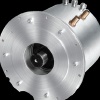Индустриален клъстер "Електромобили" - Учредители:








 |

|

|
| Актуално | За клъстера | Екип | Членове | Документи | Анализи | Услуги | Стани член | Награди | ССЕМ | Контакти |
ИКЕМ - Индустриален клъстер "Електромобили" | Сряда, 31.12.2025 | |
|
Battery Requirements for Plug-In
A plug-in hybrid electric vehicle (PHEV) is a hybrid electric vehicle (HEV) with the ability to recharge its energy storage system with electricity from an off-board power source such as a grid. The key advantage of PHEV technology relative to hybrid electric and conventional vehicles is fuel flexibility. A PHEV uses stored electrical energy to propel the vehicle and reduce petroleum consumption by the combustion engine. This provides an opportunity to drive primarily in electric mode and reduce emissions in congested cities around the world. A study by Simpson estimates that a PHEV with usable electrical energy storage equivalent to 20 miles of electric travel (PHEV20) would reduce petroleum consumption by 45% relative to that of a comparable conventional combustion engine vehicle [1]. Plug-in hybrid electric vehicles have the potential to displace a significant amount of petroleum in the next 10 to 20 years. Many believe that PHEVs could enter the passenger vehicle market much sooner than hydrogen fuel cell vehicles, since there is no need for a costly hydrogen fueling infrastructure and there are fewer technical barriers. As a result, a significant amount of activity has been initiated to advance the development of PHEVs and batteries suitable for them. For example, the U.S. Department of Energy’s (DOE) Vehicle Technologies Program (which includes the FreedomCAR and Fuel Partnership) has developed a research and development (R&D) plan to evaluate the potential of PHEVs, and the program has proposed R&D activities to improve the batteries and power electronics that go into PHEVS while also improving vehicle efficiency technologies [2]. The chief barrier to the commercialization of PHEVs has been identified to be the battery, in terms of cost, combined shallow/deep cycle life, calendar life, volume, and safety. Therefore, DOE and U.S. auto companies, through the U.S. Advanced Battery Consortium (USABC), have embarked on a sizable program to develop batteries for PHEVs. Such a program needs to have battery targets or requirements to benchmark progress. In support of USABC, we have performed vehicle analysis and battery sizing studies to recommend battery requirements. USABC intends to use these requirements in soliciting proposals from potential battery developers. The National Renewable Energy Laboratory (NREL) and Argonne National Laboratory (ANL) have conducted a number of analyses to help define these battery requirements. Researchers at ANL developed a battery model and a process for performing analyses for sizing energy storage systems for plug-in applications and investigated the impacts of all-electric range, drive cycle, and control strategy [3]. NREL researchers performed simulations to investigate the impacts of component sizes (engine power, motor power, and battery power and energy) in meeting performance constraints and energy consumption characteristics of vehicles over different driving profiles as a function of the equivalent electric range capability and the degree of hybridization [4, 5]. NREL also investigated component costs and impacts on benefits [1]. |
Продукти 
Комплектна система за задвижване на електромобилиСистемата за електрозадвижване обхваща гама с три основни типоразмера на ел. мощност със съответните компоненти - електромотор и контролер. oще ...Виж всички продуктиАнкета с продължение...
|
|
|
 ЕВРОПЕЙСКИ СЪЮЗ Европейски фонд за регионално развитие Инвестираме във вашето бъдеще |
 |
 ОПЕРАТИВНА ПРОГРАМА „Развитие на конкурентоспособността на българската икономика” 2007-2013 www.opcompetitiveness.bg |
|
Интернет страницата е създадена с финансовата подкрепа на ЕФРР, в рамките на проект „Развитие на Индустриален Клъстер Електромобили” по ДБФП К-02-2/28.09.2011 г. |
|||